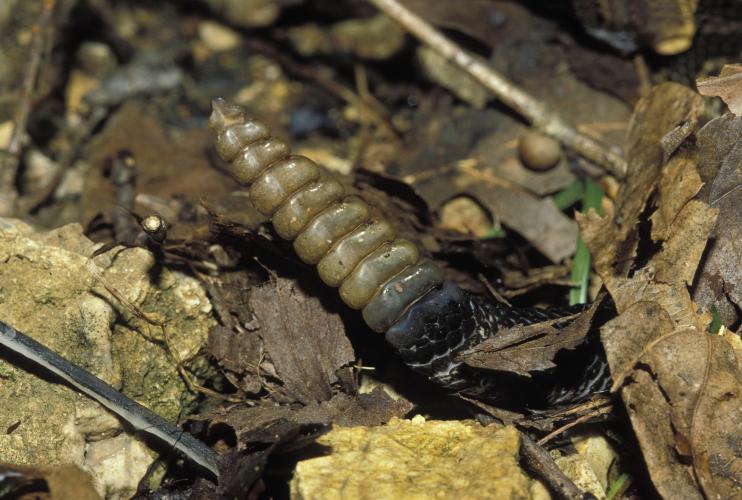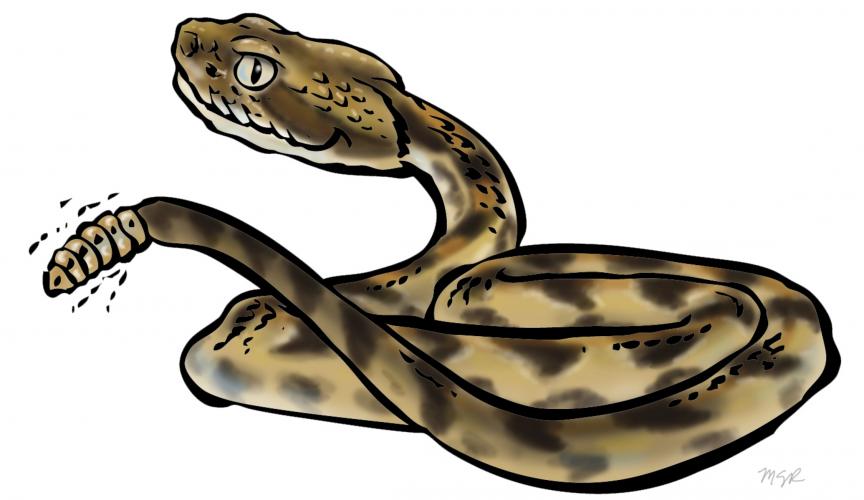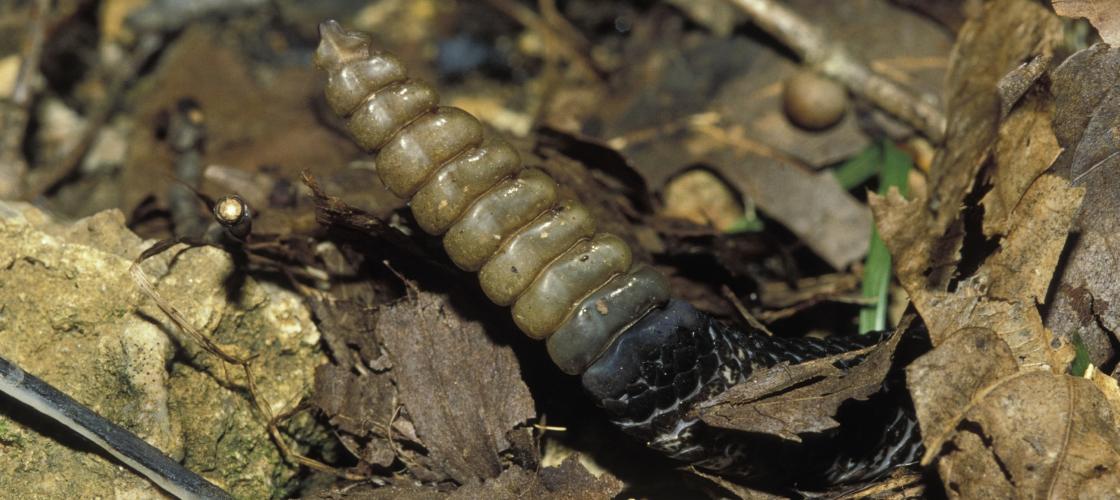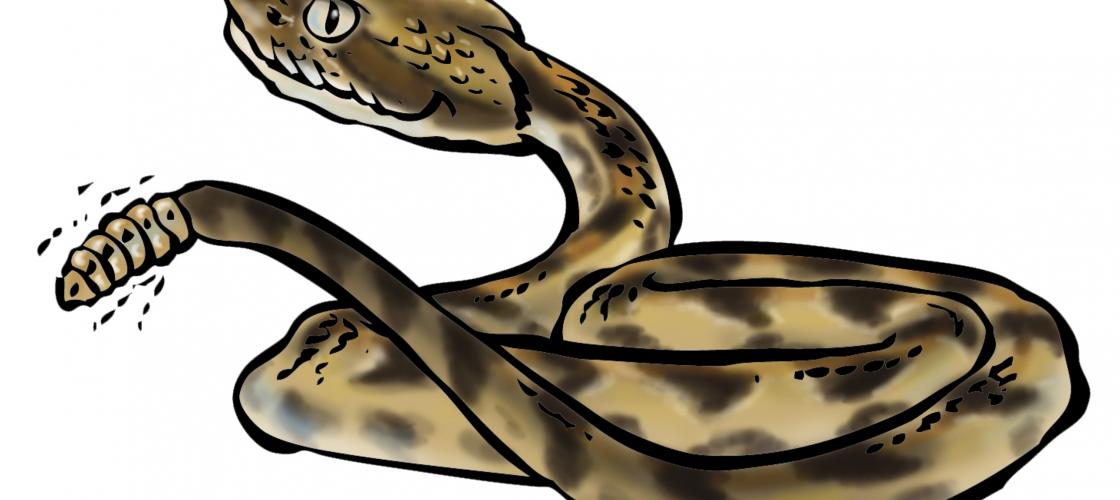It’s a startling sound that can stop you in your tracks. There’s no mistaking the rattlesnake’s rattle, but how it makes its scary sound has been misunderstood.
Some people think a rattlesnake’s rattle is full of pebbles, like beads in a baby’s rattle. Actually, the rattle is made of special hollow scales on the tip of the snake’s tail. These scales are loosely connected. When the rattlesnake vibrates its tail, the scales rapidly strike each other, causing a buzzing sound.
A rattlesnake is born with a single button on its tail. Each time the snake sheds its skin, a new segment is added at the base of the rattle. MDC Herpetologist Jeff Briggler notes that, "The more a snake is growing the faster it sheds. Younger snakes shed more than older snakes and can shed on average, three to four times a year in warmer months." As the rattle grows longer, the end segments can weaken and break off. Sometimes insects eat holes into the rattle, further weakening it and causing a loss of segments. This pattern of growth makes it impossible to determine the snake’s age by counting the number of segments in its rattle.
The buzz of the rattle is designed to draw attention. Rattlesnakes evolved on the Great Plains where hooved animals, like bison and elk, roamed. The sharp buzz of the rattle protected rattlesnakes from trampling by alerting these animals to the snakes. By scaring off predators and large, blundering intruders, rattlesnakes conserve their energy and venom for catching food.
All Rattled Up
The timber rattlesnake is Missouri's largest venomous snake.
- Like all venomous snakes in Missouri, rattlesnakes have a hole between the nostril and the eye, and the pupils, in daylight, are vertical, like a cat’s.
- Rattlesnakes typically vibrate their tails, causing a sharp buzzing sound, when alarmed. Do not rely on a rattle sound for identification, though; remember that snakes' tails are occasionally injured or cut off, and that a surprised snake may not have time to sound its rattle.
- Timber rattlesnakes live on rocky, wooded hillsides and mature forests. In Missouri, they tend to congregate in selected south-facing rocky areas where they overwinter.
- The buzzing or rattling sound is a warning to potential predators or others who might otherwise attack this snake; this communication gives the snake and a potential enemy a chance to de-escalate a confrontation, so that biting need not occur.
For more on rattlesnakes and other Missouri snakes, visit MDC’s Field Guide.
See Missouri's venomous snakes up close in the video below.




Recent Posts
























